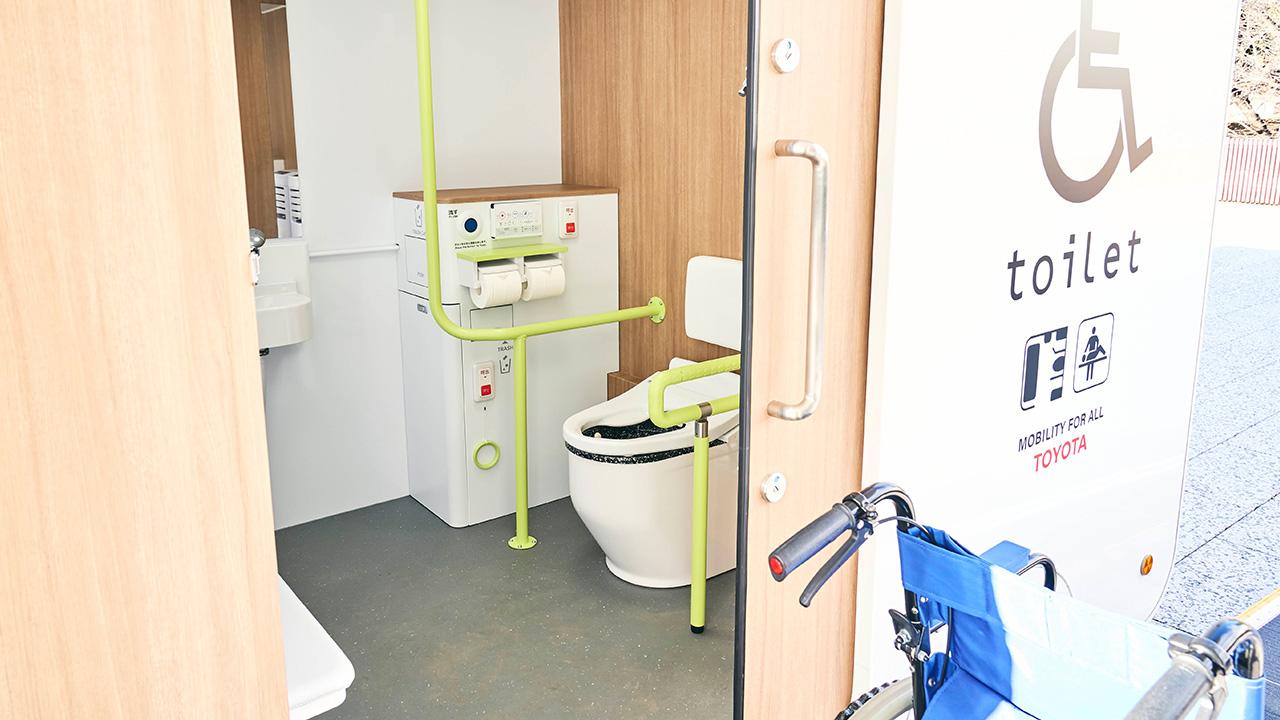
"Even with our disabilities, we still want to visit various places." Toyota's designers responded to the desires of wheelchair users by creating a mobile toilet.
The impressive technologies from outside companies
The team was driven to solve a pressing question: how can water consumption be reduced? Their research led them to the water-efficient toilets in the Shinkansen bullet trains. This sparked their quest to find a manufacturer with the necessary skills who would be willing to collaborate on the project.
Inagaki

This project was guided by a commitment to actively seek partnerships outside our company. Not only did we seek advice from companies with expertise in water systems, but we also gained various insights from those well-versed in truck manufacturing, particularly regarding the vehicle’s body construction.
The team aimed to maintain the vehicle's structural integrity while reducing its weight. They chose to use lightweight materials akin to foaming agents, sandwiched between thin metal plates. These components are commonly used in refrigerated truck containers.
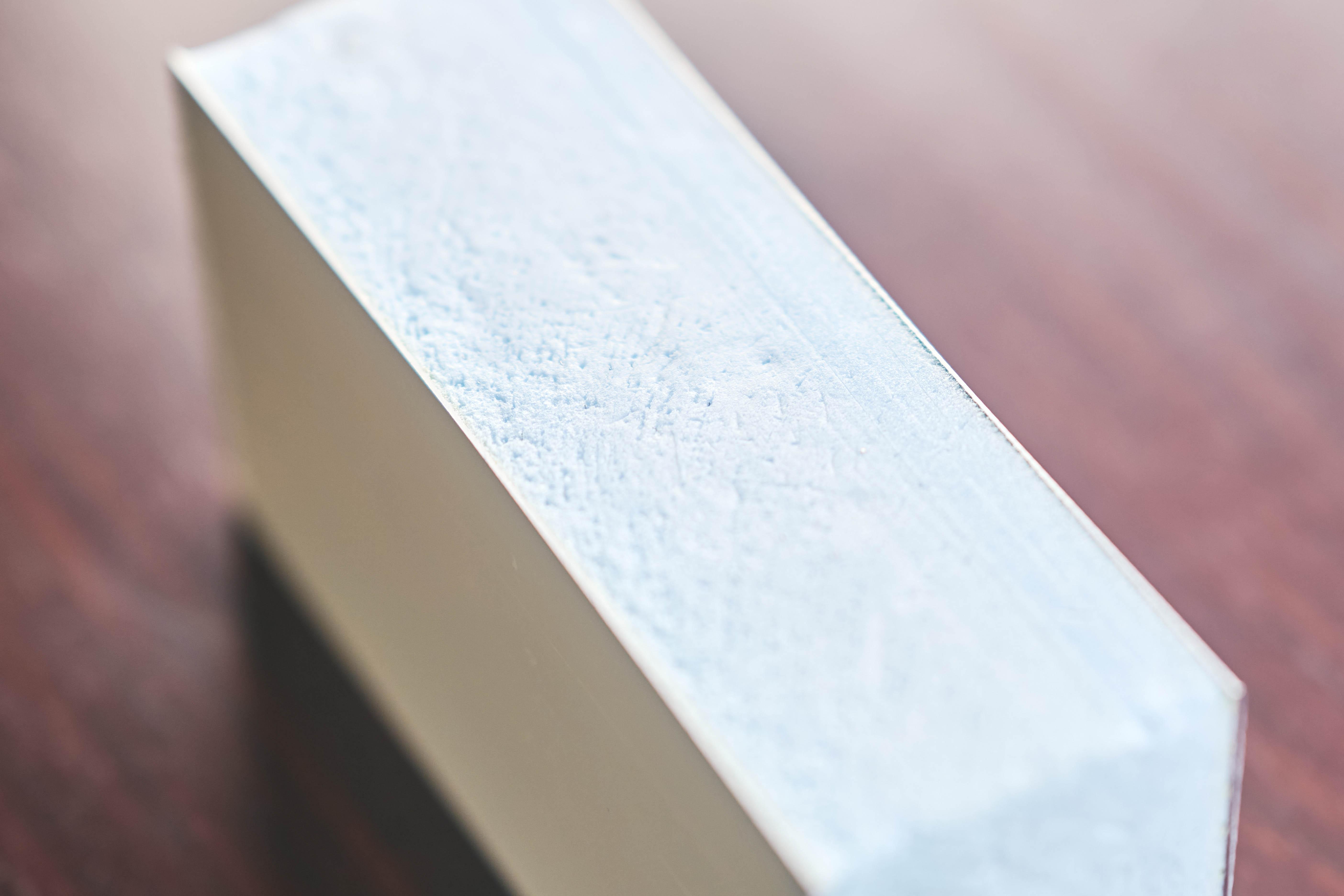
Cooperating with external companies broadened the team’s horizons significantly. In the field of hydrogen engine development, there's a shared belief that the future is ours to create together This resonated strongly with the team as they exchanged ideas, paving the way for their pioneering project in mobile toilet development.
The team was keen to gather feedback not just from wheelchair users, but also from municipal authorities who would be involved in the deployment process. A key insight they received was to design the toilet to be towable rather than self-propelled, to enhance ease of use.
But this insight led to a considerable hurdle.
Inagaki
We learned that it was crucial to design the toilet to be towable even by someone with a standard driver's license, because there aren't many people who hold a towing license.
The toilet had to be lightweight and narrow, requiring an overall compact design, so it could be towed with a regular driver's license.
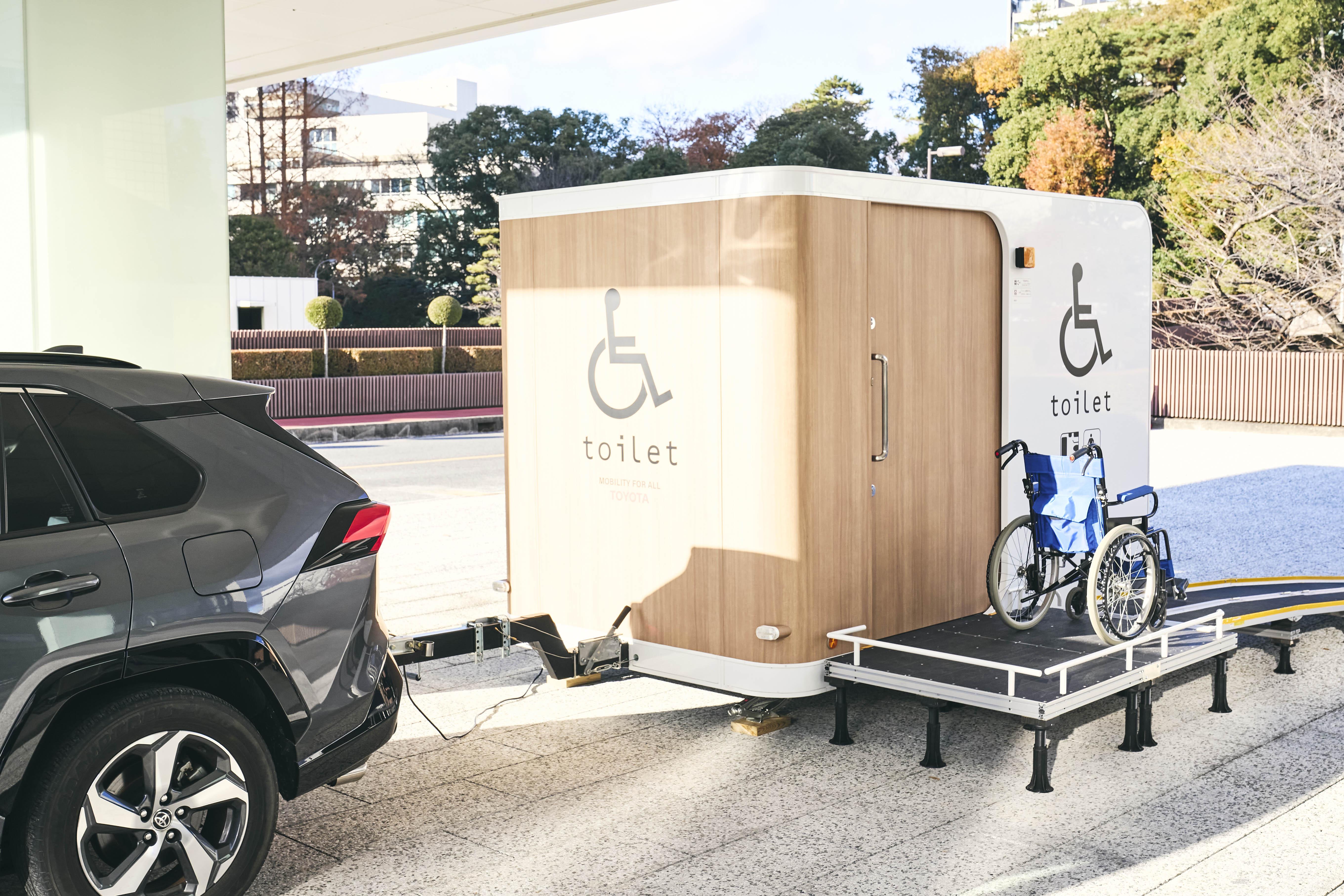
However, downsizing couldn't come at the cost of functionality. This is where the team’s true expertise as automotive designers came into play—to make a small space not only look larger but also feel more comfortable.
For instance, take this handrail. Its corners are curved outward instead of being right-angled.
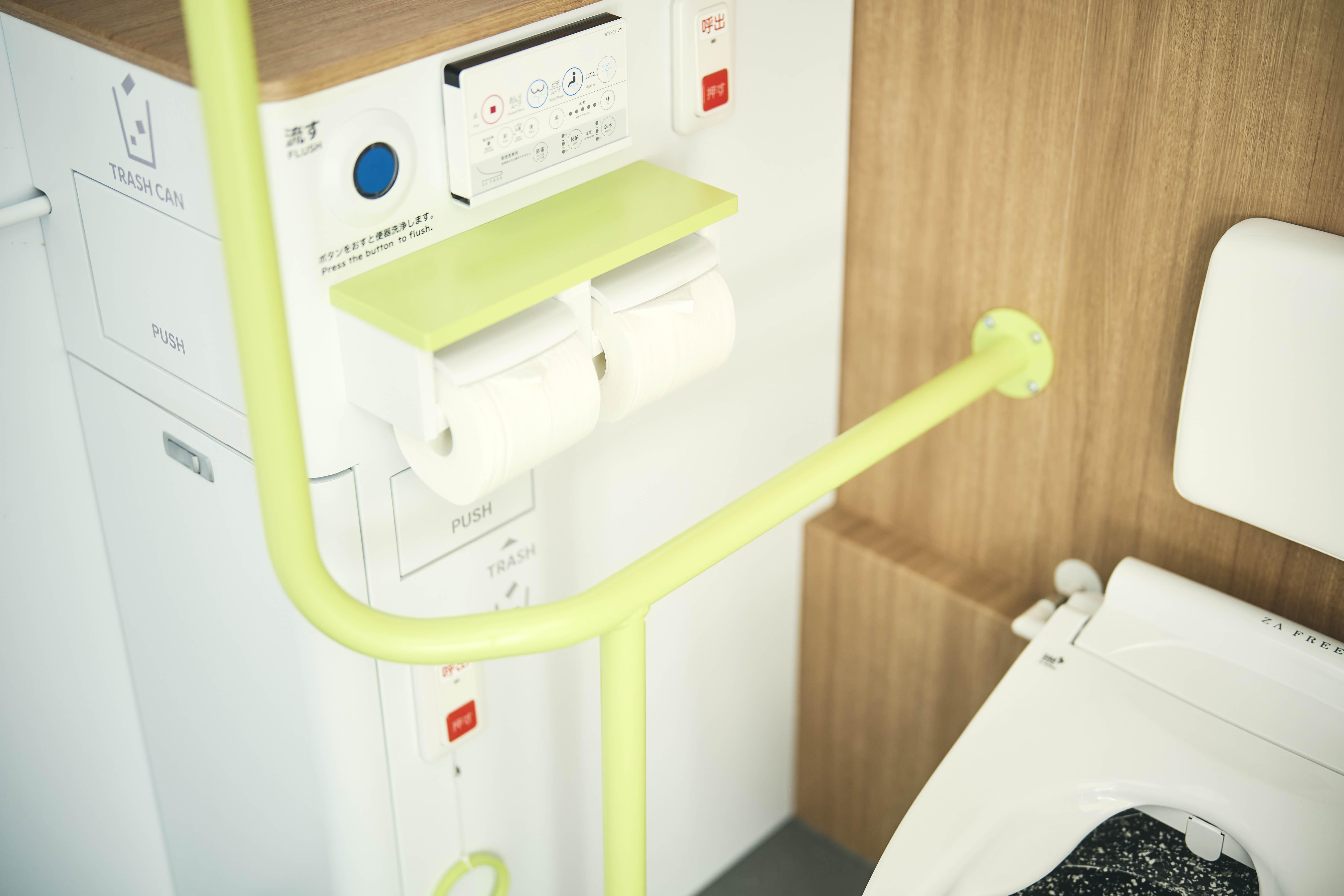
This design allows a wheelchair to turn a full 360° without bumping into anything, a subtle touch that opened up a spacious area in the middle.
The wheels attached to the floor corners created dead spaces to house these wheels, which were put to good use as places to store air conditioners and waste bins.
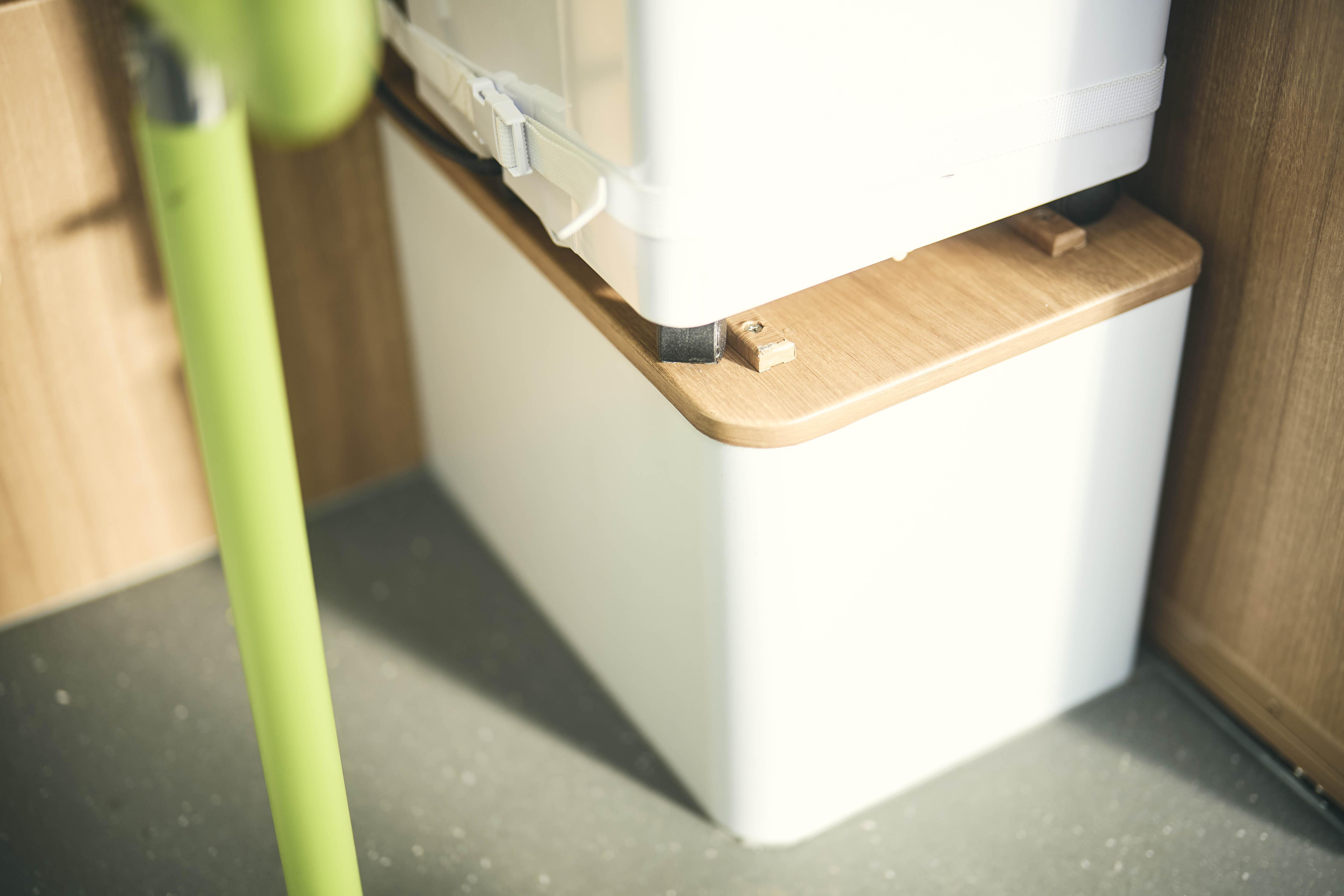
The team also added a tinted skylight into the ceiling. This simple feature lets in sunlight, making the interior feel spacious and bright while also reducing electricity consumption.

Moreover, they designed the ramp to extend from the side, not the back, of the vehicle, a decision based on thoughtful considerations.
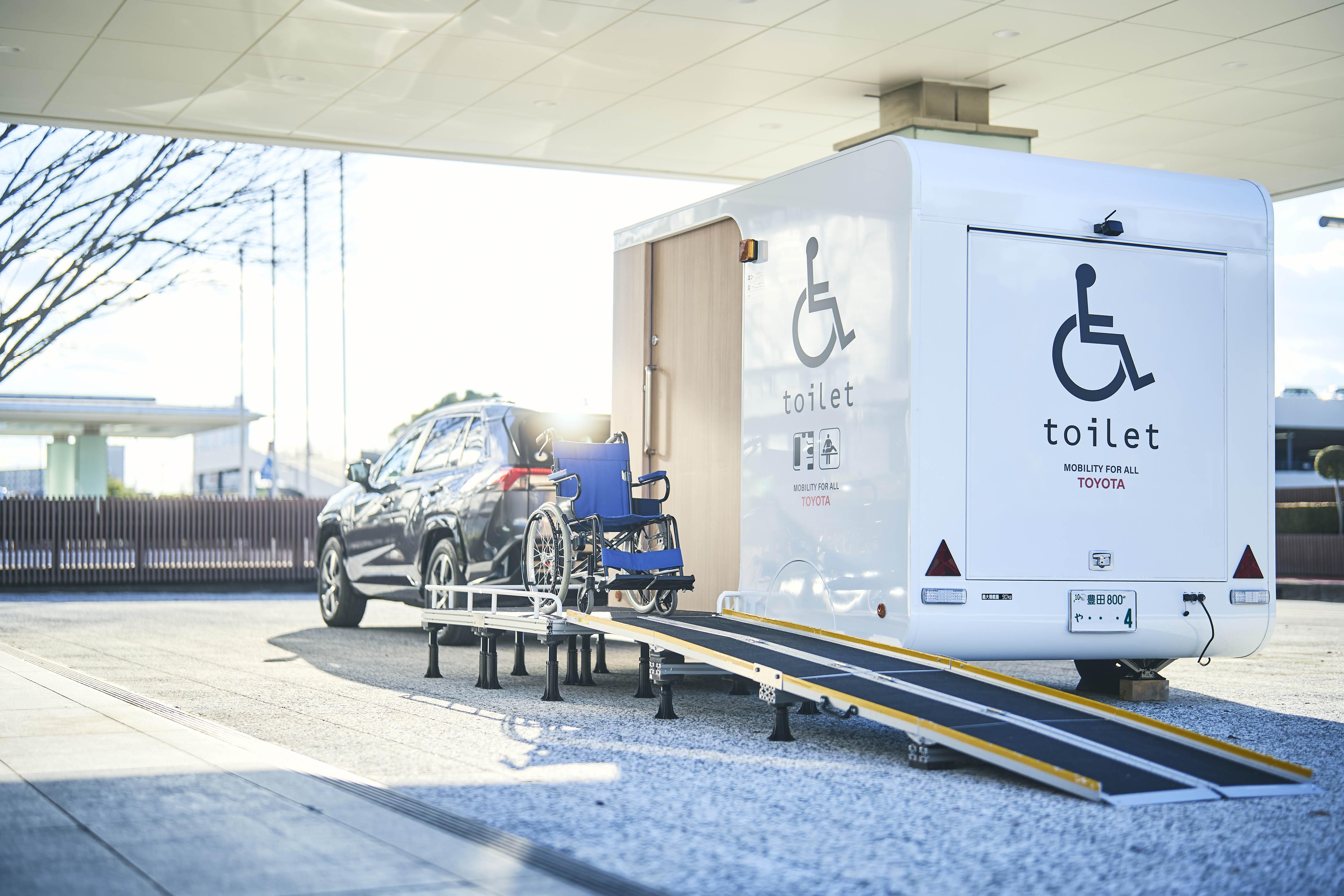
This design prevents the toilet from taking up too much road space in the front and back. Much like a conventional toilet, it also caters to the users' psychological need for privacy, as it's harder for others to see inside when they’re entering.
The result is a mobile toilet that genuinely embodies Mobility for All, a testament to the collective innovation and skills from within the company and beyond. For the designers, creating this universally accessible toilet was a journey of discovering and appreciating the diverse values in society.
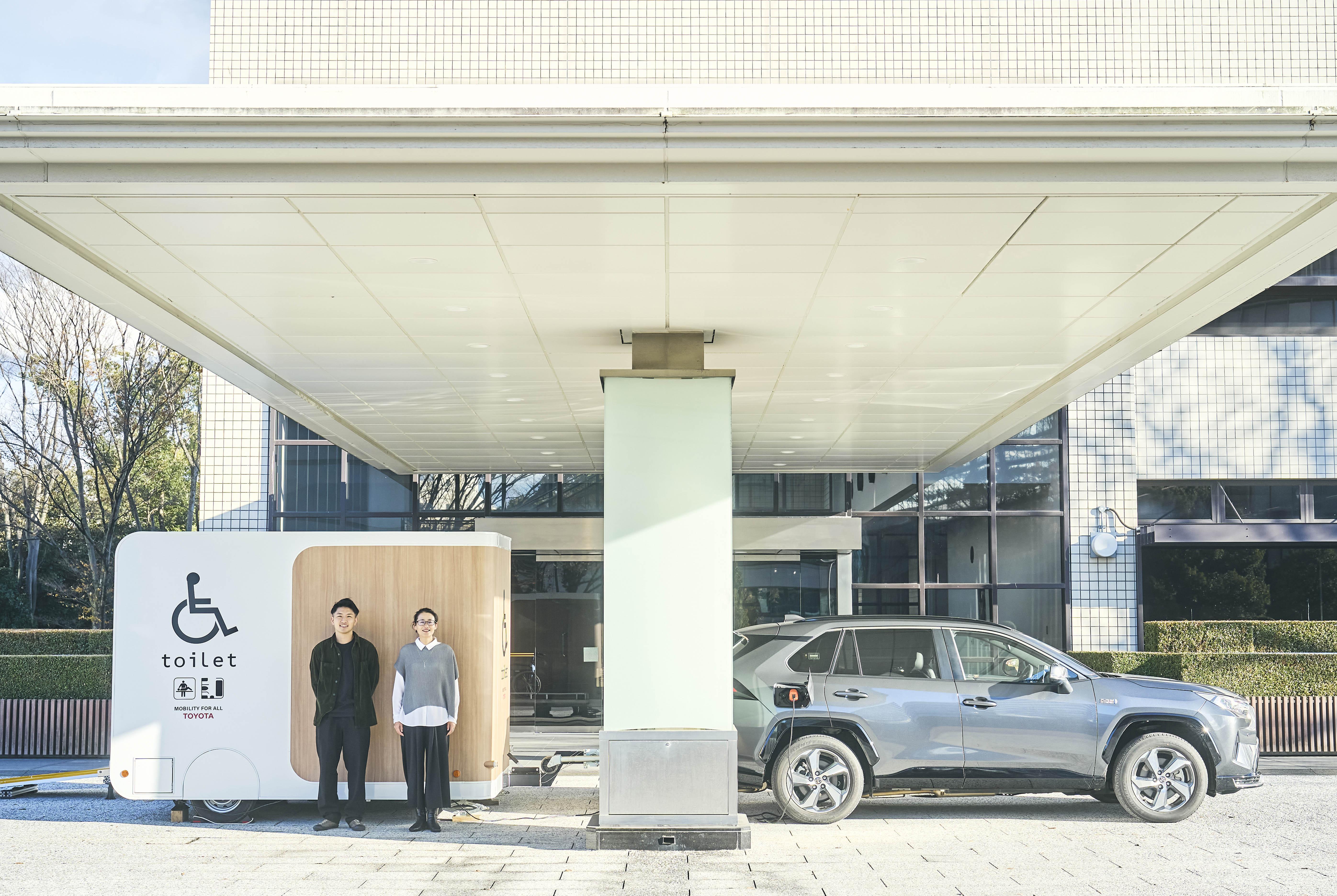
The team says it has received heartening feedback from wheelchair users:
“I feel inspired to try things I once believed were impossible for me—going to the beach, camping, or attending a packed concert.”
“I'm more optimistic now, my personality has brightened, and I feel a surge of ambition to tackle more challenges.”
In November 2022, this mobile toilet made its debut at the 13th round of the esteemed FIA World Rally Championship (WRC), the Forum8 Rally Japan 2022, held in Aichi and Gifu. Wheelchair users could now savor the adrenaline rush of live motorsports.
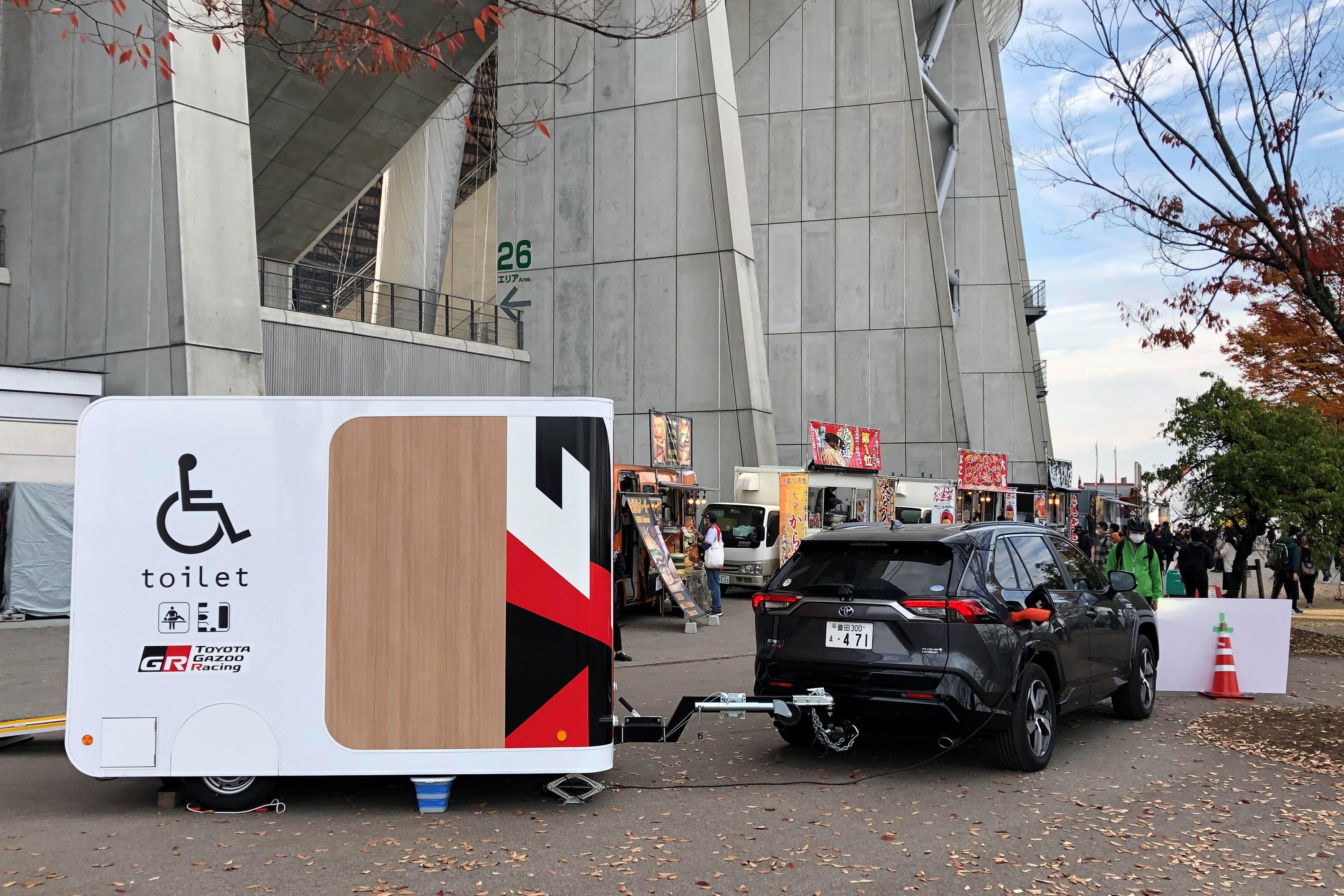
The team didn't stop there but seized the opportunity to gather valuable user feedback at the event for future enhancements.
Vision Design Division: “Are you comfortable with its size?”
Users: “It would be nice if the door could open and close at the press of a button.” “The lock seems a bit tricky to operate.”
Vision Design Division: “We're on it—improvements are on the way!”
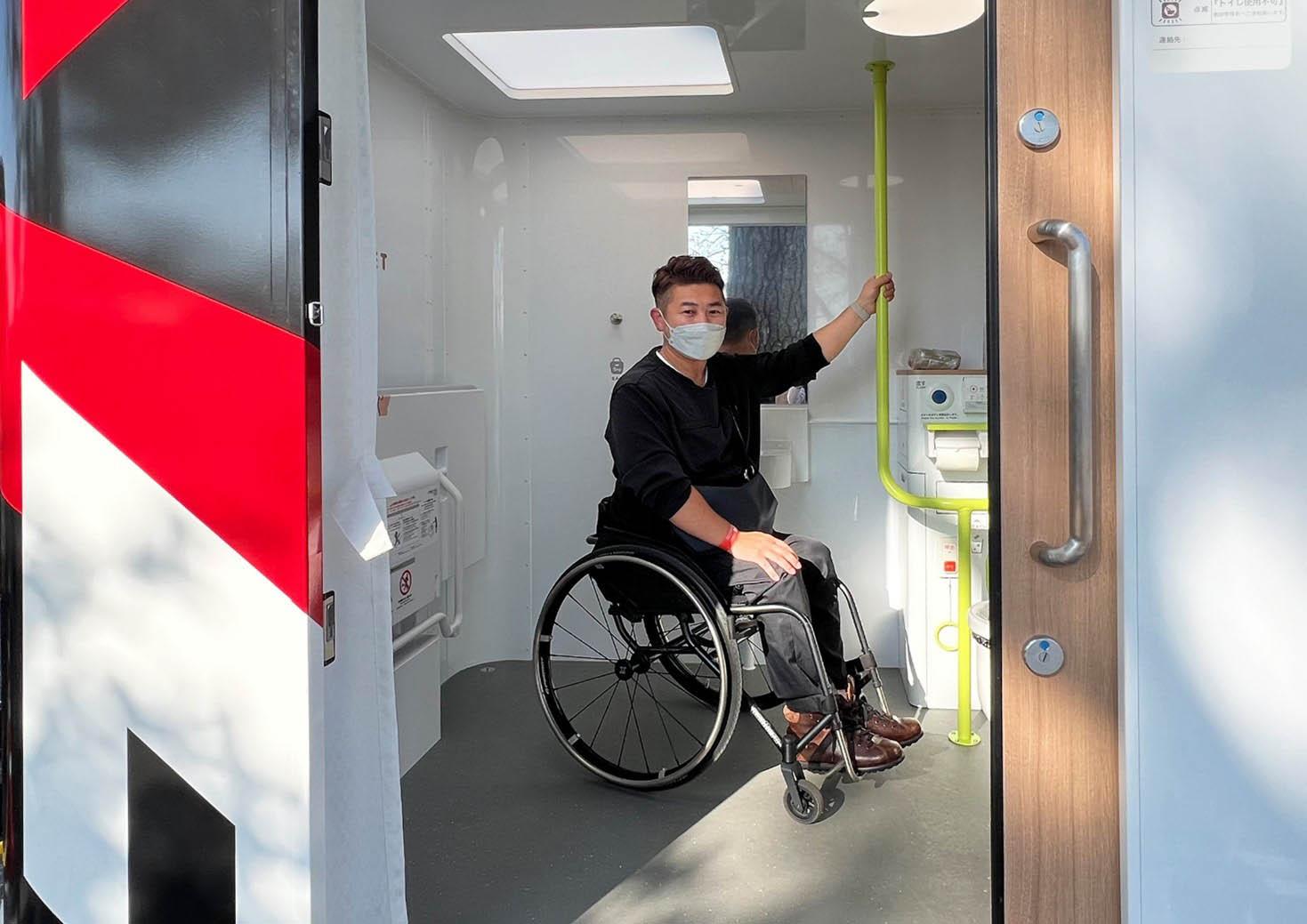
Indeed, these mobile toilets represent a new frontier in mobility.
The team’s vision extends beyond merely accommodating wheelchair users, but also anyone who finds traditional toilet facilities difficult to use, including those needing assistance or parents with babies. Even now, on the design floor, they continue their steadfast efforts to enhance the practicality of the toilet for all.

